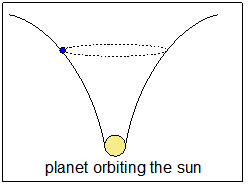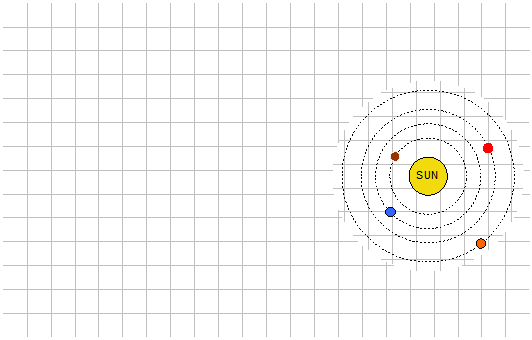
This effect could be a serious
problems for stable orbits. Letís look at the case
of the moon orbiting Earth. By the time the moon
returns to a given position one month later, Earth has
changed direction of motion by 30 degrees at it moves
around the sun. For objects farther away from the
sun, the delay could be much greater; for example, the
Oort cloud is estimated to extend more than one light-year
from the sun.
Scientists have known for some time that the planets
orbit the instantaneous position of the sun, regardless
of their distance. This would require that the
speed of gravity be 1010c or higher by some
estimates; where c is the speed of light. Recent
observations of neutron stars merger in Aug 2017 have
confirmed that the speed of propagation of gravity is
the same as the speed of light in vacuum.
This conundrum is easily addressed by SM by having the
sun be stationary in a gravitational bubble.
When we look at Saturn, we aim our telescopes to the
position where Saturn was over an hour ago, since it
takes more than one hour for the light from Saturn to
get to Earth. When we see Saturn, Saturn is no
longer there. Letís suppose that Saturn is not
moving, and it is always in the same position. If
that were the case, we would see Saturn in its present
location, even though light takes more than one hour to
get to us.
When the sun creates a gravitational bubble around
itself, the sun is always at the center of the bubble,
space falls towards the sun within the bubble and
gravity propagates through the space in the
bubble. Planets orbiting the sun within the sunís
bubble will see the sun always in the same position
because the sun is not moving through space. The
sunís bubble is moving through space around the galaxy
carrying the planets, asteroids, comets and all other
objects orbiting (and including) the sun. The
animation below illustrates the effect for
clarity. Only a small portion of the solar system
is shown.

As seen above, the sun is always stationary with respect to its gravitational bubble. The planets also create a smaller gravitational bubbles around themselves for their respective orbiting satellites. The planets are also stationary with respect to their own bubble; it is the planetary bubble that orbits the sun.